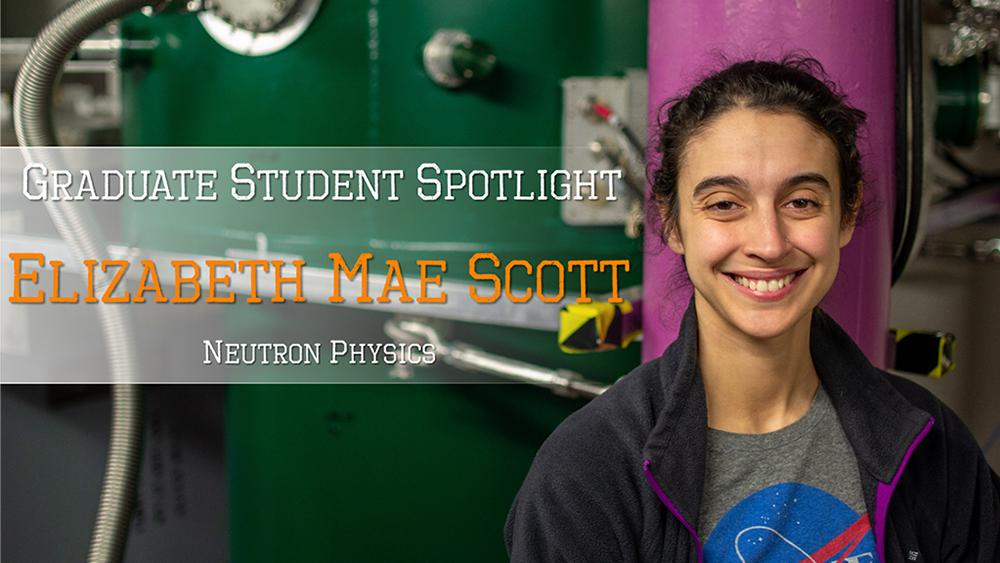April 3, 2019

During an introductory nuclear physics course her sophomore year, Elizabeth Mae Scott developed a need to understand things from their most basic, original structure. The course showed her how math becomes a language that physicists use to describe the world around them.
“Fundamental physics is a way to pry at the cosmos. It’s really fun to try to understand the tenets of how things work, to push the boundaries of how we describe our universe,” she said.
Scott earned bachelor’s degrees in physics and mathematics from Tulane University. Now a graduate student in nuclear physics at UT, she continues to push those boundaries as part of a collaborative experiment called Nab at the Spallation Neutron Source at Oak Ridge National Laboratory.
When a neutron decays, it decays into three particles: a proton, an electron, and an antineutrino. The relationship, or correlation, between the electron and the antineutrino is known as the parameter a, or “little a.” Scott and her collaborators at the Nab experiment aim to measure that parameter with a precision of 10-3, which would make their measurement the most precise ever.
The experiment will either confirm the the physics theory that explains how the building blocks of our universe interact—known as the standard model—or it will reveal where the model breaks down, which will let scientists start to refine it. Either outcome has implications for physicists, who use a in numerous equations and experiments. A change in the standard model would mean a change in our fundamental understanding of the universe.
Read more at research.utk.edu.